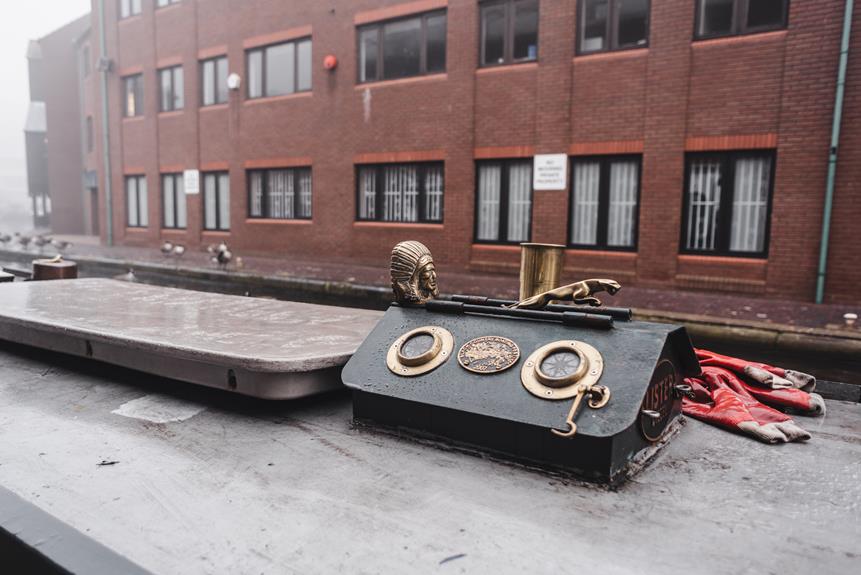Nestled in the Khulna Division of Bangladesh, Chuadanga District stands as a testament to the ebbs and flows of history and a testament to the resilience of its people. With a captivating past marked by uprisings and pivotal moments in the Bangladesh Liberation War, Chuadanga's explosive history has left an indelible imprint on its collective memory. However, it is not just its historical narrative that makes this district intriguing; Chuadanga's thriving economy, anchored by its agricultural prowess and diverse cottage industries, serves as a beacon of growth and prosperity. As we embark on a journey through the annals of Chuadanga's past and delve into the intricacies of its thriving economy, we will uncover a tapestry of untold stories and discover what truly sets this district apart.
Historical Significance
Chuadanga District holds immense historical significance, as it has been witness to numerous uprisings and pivotal events throughout its past. During the British rule, it saw several uprisings such as the Wahabi Movement, Faraizi Movement, Sepoy Rebellion, Indigo Rebellion, Khilafat Movement, Swadeshi Movement, Non-cooperation movement, and Quit India Movement. In 1947, after the partition, Chuadanga became a part of East Pakistan. However, it gained even more historical importance during the Bangladesh Liberation War in 1971. It was declared the first capital of Bangladesh and witnessed intense battles between the Pakistan Army and the pro-independence Mukti Bahini. The district also holds a mass graveyard of the victims of the Bangladesh genocide during the Liberation War. Apart from its historical significance, Chuadanga has experienced population growth over the years, with the population increasing from 654,135 in 1981 to 1,234,066 in 2022.
Geographic Features
The historical significance of Chuadanga District is closely tied to its unique geographic features, which have played a crucial role in shaping its history and economy. Here are some key features that define the district:
- Climate: Chuadanga experiences a relatively low temperature compared to other parts of Bangladesh, with the lowest temperature in the country recorded here in January 2018. The climate is characterized by hot summers and mild winters, creating favorable conditions for agriculture.
- Connectivity: The district is well-connected to its neighboring districts and the rest of the country through a network of inter-district highways and a railway system. This connectivity facilitates trade and transportation, allowing for the smooth flow of goods and people.
- Bordering West Bengal: Chuadanga shares its western border with the Indian state of West Bengal. This proximity to a major Indian state contributes to cross-border trade and cultural exchanges, further boosting the district's economy.
- Strategic Location: Situated in the Khulna Division of Bangladesh, Chuadanga holds a strategic position that enhances its economic potential. It serves as a gateway to other important districts in the region, enabling commercial activities and attracting investments.
These geographic features have played a significant role in shaping Chuadanga's history and have contributed to the thriving economy of the district.
Administrative Structure
The administrative structure of Chuadanga District is organized into four Upazilas, each with its own city of the same name, under the leadership of the Deputy Commissioner, Mohammad Aminul Islam Khan. The Upazilas in Chuadanga District are Chuadanga Sadar, Alamdanga, Jibannagar, and Damurhuda. These administrative divisions play a crucial role in local governance and ensure effective management of the district's affairs. Each Upazila has its own city, which serves as a center for economic and social activities. The Deputy Commissioner oversees the overall administration of the district and is responsible for maintaining law and order, implementing government policies, and coordinating the work of the Upazilas. The following table provides a summary of the administrative structure of Chuadanga District:
| Upazila | City |
|---|---|
| Chuadanga Sadar | Chuadanga |
| Alamdanga | Alamdanga |
| Jibannagar | Jibannagar |
| Damurhuda | Damurhuda |
This administrative hierarchy ensures efficient governance and facilitates the development and progress of Chuadanga District.
Demographic Profile
With a population of 1,234,066 and a population density of 1,051 people per square kilometer, Chuadanga District is characterized by its diverse demographics and significant population growth over the years. Here are some key points about the demographic profile of Chuadanga District:
- Population Growth: The district has experienced a noticeable increase in population, with the number of residents growing from 654,135 in 1981 to 1,234,066 in 2022. This growth can be attributed to various factors such as improved healthcare, infrastructure development, and economic opportunities.
- Literacy Rate: The literacy rate in Chuadanga is 71.1%, which is slightly lower than the national average of 74.7%. Efforts are being made to improve educational facilities and promote literacy in the district.
- Religious Composition: The majority religion in Chuadanga is Islam, with Muslims accounting for 97.46% of the population. Hindus make up 2.35% of the population.
- Urbanization: About 24.4% of the population of Chuadanga District lives in urban areas, indicating a growing trend of urbanization in the region.
These demographic factors play a crucial role in shaping the social, economic, and cultural landscape of Chuadanga District.
Cultural and Religious Diversity
Having examined the demographic profile of Chuadanga District, we can now explore the rich cultural and religious diversity that characterizes the region. Chuadanga is known for its vibrant cultural heritage, which is a blend of various influences. The district is home to people from different ethnic backgrounds, including Bengalis, Biharis, and Rajbanshis, who have contributed to the cultural tapestry of the region. The residents of Chuadanga take pride in their traditions, customs, and folk arts, which are passed down through generations. In terms of religious coexistence, the district is predominantly Muslim, with Islam being the majority religion. However, there is also a significant Hindu population that peacefully coexists with their Muslim counterparts. This religious diversity adds to the cultural richness of Chuadanga, fostering an atmosphere of harmony and tolerance. The district's festivals and celebrations, such as Eid-ul-Fitr, Durga Puja, and Kali Puja, are celebrated with great enthusiasm, showcasing the unity in diversity that exists within the community. Overall, Chuadanga District is a testament to the cultural and religious diversity that thrives in Bangladesh.
Vibrant Economic Sectors
Chuadanga District boasts a diverse range of vibrant economic sectors that contribute to its thriving local economy. These sectors drive the district's agricultural productivity and industrial growth. Here are four key areas that play a significant role in Chuadanga's economic landscape:
- Agriculture: The fertile land in Chuadanga supports the cultivation of various crops, including paddy, jute, wheat, and vegetables. The district is known for its high agricultural productivity, which not only feeds the local population but also contributes to the national food supply.
- Dairy Farming and Livestock Production: Chuadanga is renowned for its dairy farming industry, with a substantial number of cattle farms producing milk and other dairy products. Additionally, livestock production, including poultry, goat, and sheep farming, contributes significantly to the district's economy.
- Small and Medium-Sized Industries: Chuadanga has a thriving sector of small and medium-sized industries. Rice mills, oil mills, and brick kilns are prominent contributors to the local economy. These industries provide employment opportunities and contribute to the overall industrial growth of the district.
- Cottage Industry: Chuadanga has a growing cottage industry sector, with handicrafts and pottery being popular among local artisans. These industries not only preserve traditional craftsmanship but also generate income and employment opportunities for the local population.
Frequently Asked Questions
What Are the Major Events or Uprisings That Took Place in Chuadanga During British Rule?
During British rule, Chuadanga witnessed several major uprisings. These included the Wahabi Movement, Faraizi Movement, Sepoy Rebellion, Indigo Rebellion, Khilafat Movement, Swadeshi Movement, Non-cooperation movement, and Quit India Movement. These uprisings were significant in shaping the history of Chuadanga and the struggle for independence in Bangladesh. They reflected the strong resistance of the local population against British colonial rule and their aspirations for self-determination and freedom. These events played a crucial role in the socio-political and cultural development of Chuadanga during that period.
What Is the Current Population of Chuadanga District and How Has It Changed Over the Years?
The current population of Chuadanga District is 1,234,066, with a significant increase from 654,135 in 1981. This population growth can be attributed to various factors, including demographic changes and improved living conditions. The district has seen a rise in urbanization, with 24.4% of the population residing in urban areas. Additionally, the literacy rate in Chuadanga is slightly lower than the national average, indicating the need for further educational development in the district. These demographic trends reflect the ongoing changes in Chuadanga's population over the years.
Who Is the Current Deputy Commissioner of Chuadanga?
The current Deputy Commissioner of Chuadanga is Major General Md Zakir Hasan. As the Deputy Commissioner, Major General Md Zakir Hasan is responsible for the administration and governance of the district. He plays a crucial role in ensuring the smooth functioning of various government departments and implementing policies and programs for the welfare and development of the district. With his expertise and leadership, Major General Md Zakir Hasan contributes to the overall progress and prosperity of Chuadanga.
What Are the Main Industries or Economic Sectors in Chuadanga District, Apart From Agriculture?
Apart from agriculture, Chuadanga district in Bangladesh has a diverse range of industries and economic sectors. The district is known for its thriving small and medium-sized industries, including rice mills, oil mills, and brick kilns. These industries contribute significantly to the local economy. Additionally, Chuadanga has a growing cottage industry sector, with handicrafts and pottery being popular. These industries provide employment opportunities and contribute to the overall economic development of the district.
Are There Any Significant Landmarks or Sites of Historical Importance in Chuadanga District?
Chuadanga District in Bangladesh is home to several significant landmarks and historical sites. These include the mass graveyard of victims of the Bangladesh genocide during the Liberation War, located behind the Chuadanga Government Hospital. The district also has a rich history, being the first capital of Bangladesh during the Liberation War. With its explosive history and thriving economy, Chuadanga District offers a unique blend of historical importance and economic prosperity.





